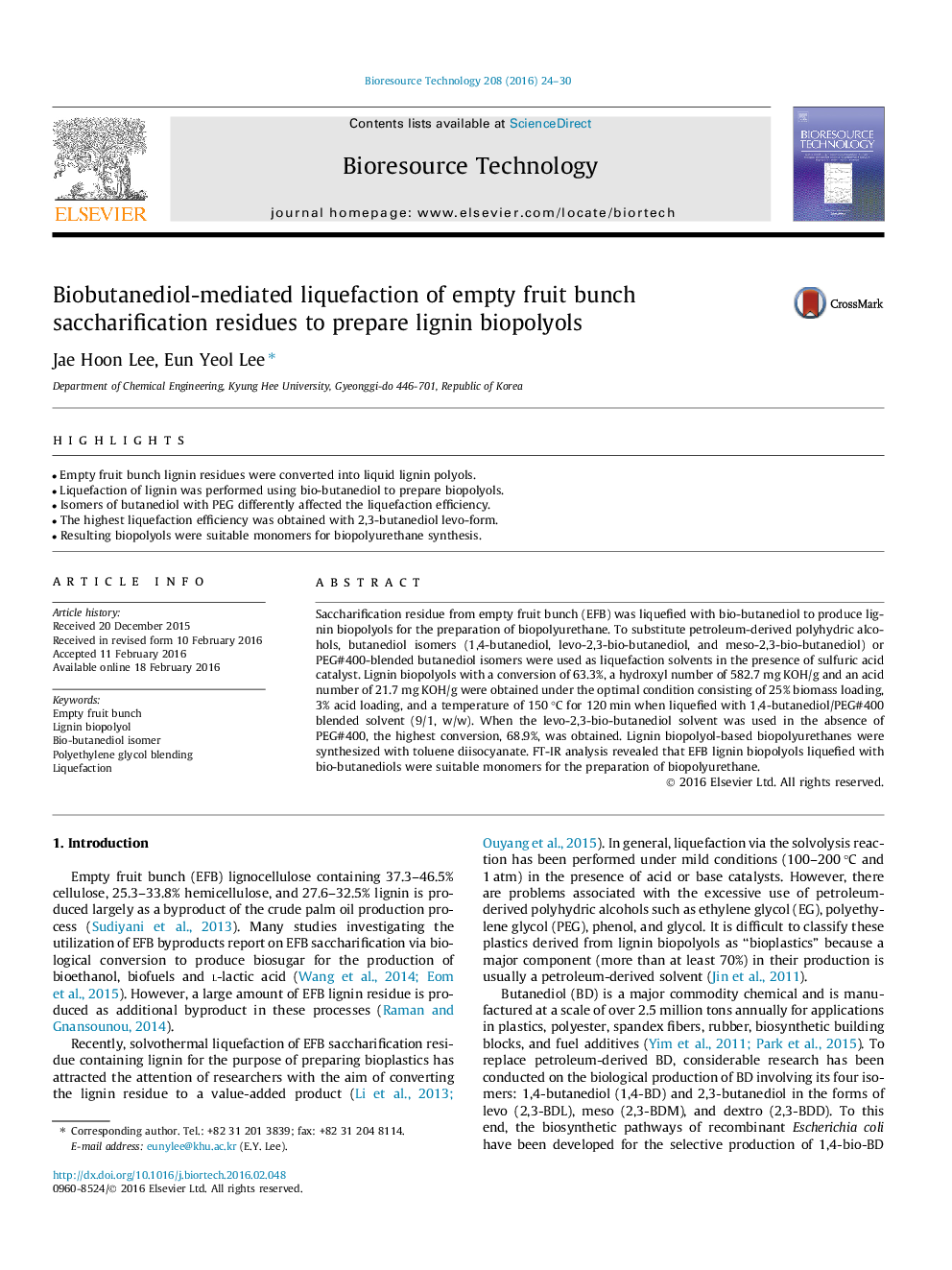| Article ID | Journal | Published Year | Pages | File Type |
|---|---|---|---|---|
| 679244 | Bioresource Technology | 2016 | 7 Pages |
•Empty fruit bunch lignin residues were converted into liquid lignin polyols.•Liquefaction of lignin was performed using bio-butanediol to prepare biopolyols.•Isomers of butanediol with PEG differently affected the liquefaction efficiency.•The highest liquefaction efficiency was obtained with 2,3-butanediol levo-form.•Resulting biopolyols were suitable monomers for biopolyurethane synthesis.
Saccharification residue from empty fruit bunch (EFB) was liquefied with bio-butanediol to produce lignin biopolyols for the preparation of biopolyurethane. To substitute petroleum-derived polyhydric alcohols, butanediol isomers (1,4-butanediol, levo-2,3-bio-butanediol, and meso-2,3-bio-butanediol) or PEG#400-blended butanediol isomers were used as liquefaction solvents in the presence of sulfuric acid catalyst. Lignin biopolyols with a conversion of 63.3%, a hydroxyl number of 582.7 mg KOH/g and an acid number of 21.7 mg KOH/g were obtained under the optimal condition consisting of 25% biomass loading, 3% acid loading, and a temperature of 150 °C for 120 min when liquefied with 1,4-butanediol/PEG#400 blended solvent (9/1, w/w). When the levo-2,3-bio-butanediol solvent was used in the absence of PEG#400, the highest conversion, 68.9%, was obtained. Lignin biopolyol-based biopolyurethanes were synthesized with toluene diisocyanate. FT-IR analysis revealed that EFB lignin biopolyols liquefied with bio-butanediols were suitable monomers for the preparation of biopolyurethane.
